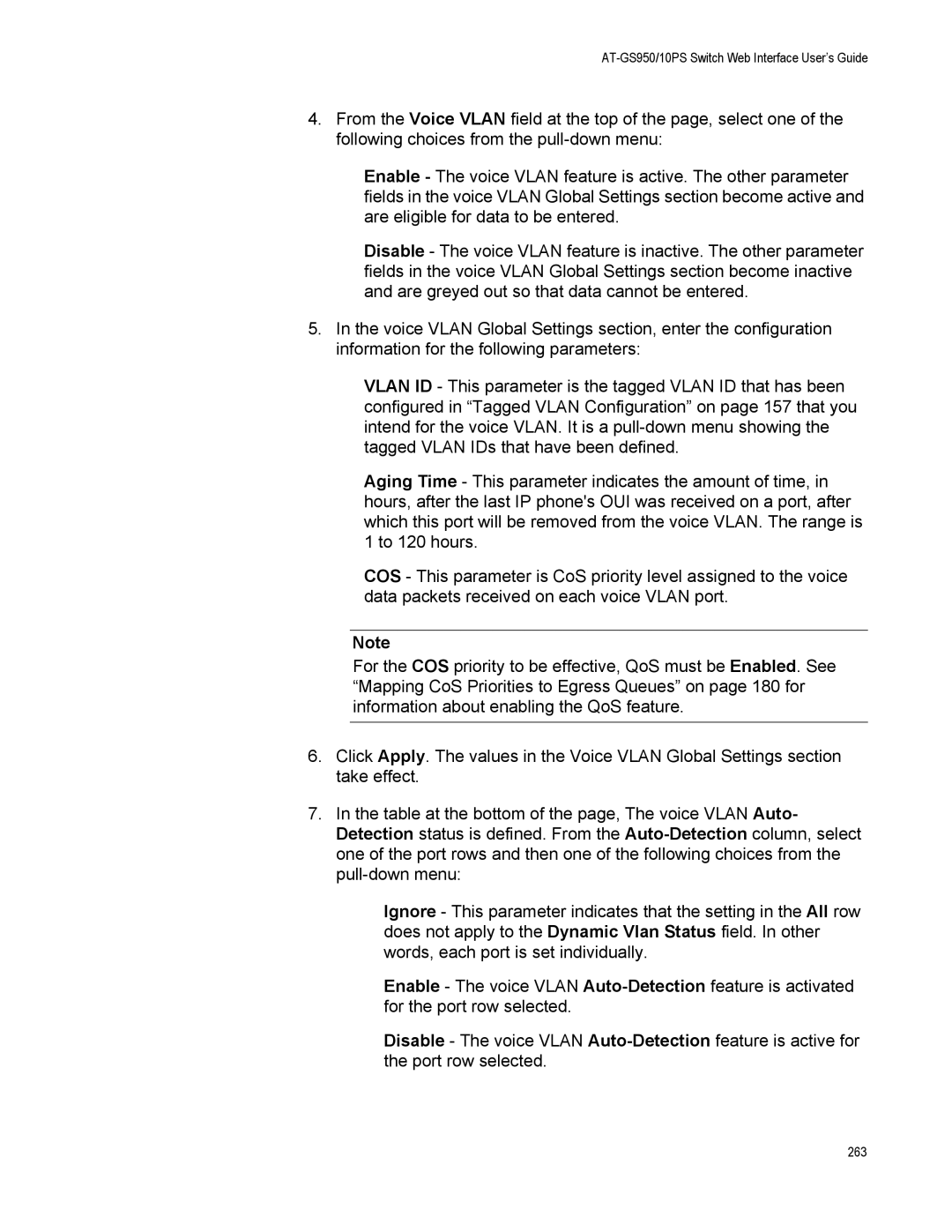
AT-GS950/10PS Switch Web Interface User’s Guide
4.From the Voice VLAN field at the top of the page, select one of the following choices from the
Enable - The voice VLAN feature is active. The other parameter fields in the voice VLAN Global Settings section become active and are eligible for data to be entered.
Disable - The voice VLAN feature is inactive. The other parameter fields in the voice VLAN Global Settings section become inactive and are greyed out so that data cannot be entered.
5.In the voice VLAN Global Settings section, enter the configuration information for the following parameters:
VLAN ID - This parameter is the tagged VLAN ID that has been configured in “Tagged VLAN Configuration” on page 157 that you intend for the voice VLAN. It is a
Aging Time - This parameter indicates the amount of time, in hours, after the last IP phone's OUI was received on a port, after which this port will be removed from the voice VLAN. The range is 1 to 120 hours.
COS - This parameter is CoS priority level assigned to the voice data packets received on each voice VLAN port.
Note
For the COS priority to be effective, QoS must be Enabled. See “Mapping CoS Priorities to Egress Queues” on page 180 for information about enabling the QoS feature.
6.Click Apply. The values in the Voice VLAN Global Settings section take effect.
7.In the table at the bottom of the page, The voice VLAN Auto- Detection status is defined. From the
Ignore - This parameter indicates that the setting in the All row does not apply to the Dynamic Vlan Status field. In other words, each port is set individually.
Enable - The voice VLAN
Disable - The voice VLAN
